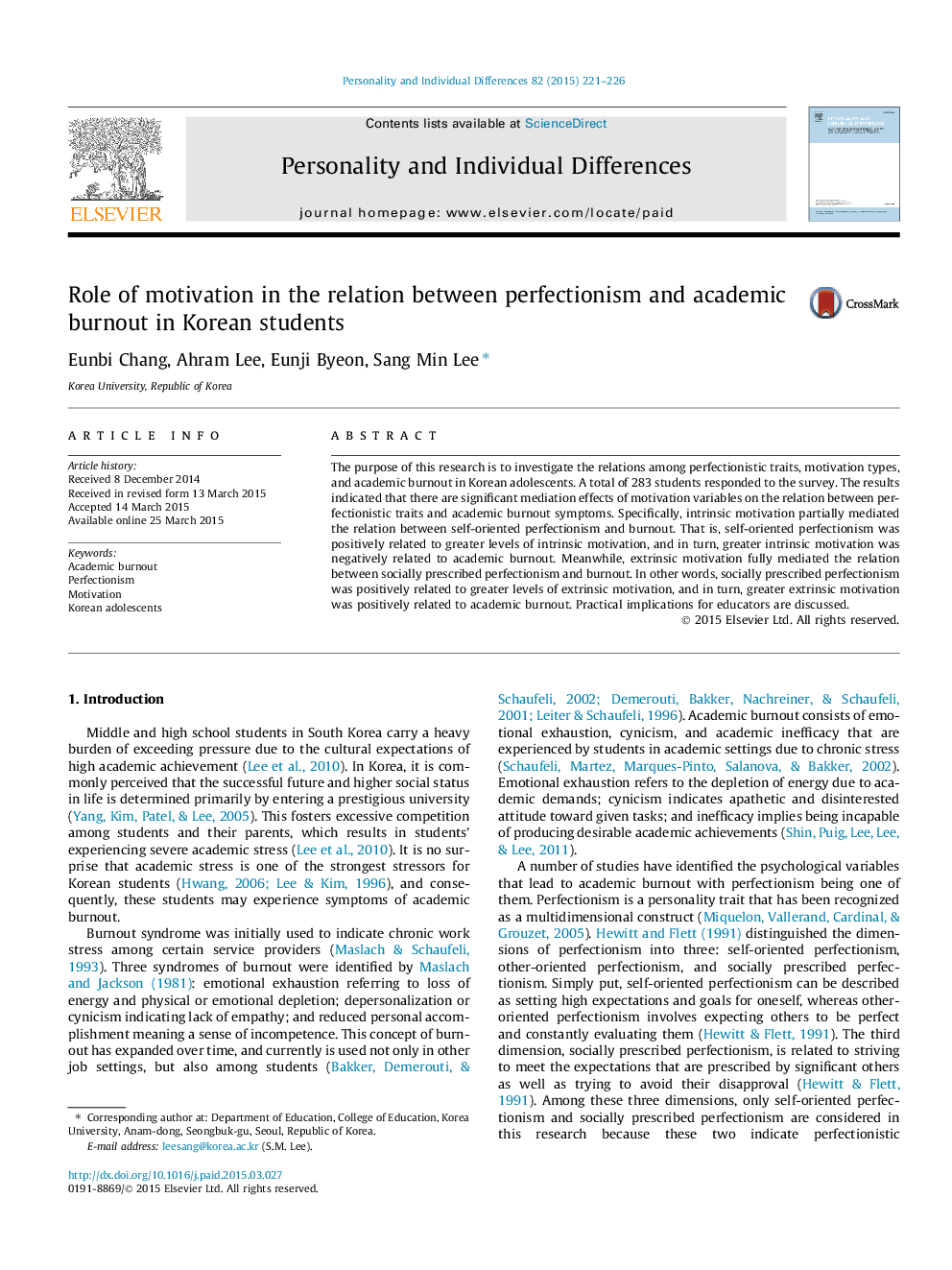| کد مقاله | کد نشریه | سال انتشار | مقاله انگلیسی | نسخه تمام متن |
|---|---|---|---|---|
| 890105 | 1472036 | 2015 | 6 صفحه PDF | دانلود رایگان |
کلیدواژهها
1.مقدمه
2.روش
2.1.شرکتکنندگان
2.2.معیارها
2.2.1.فرسودگی تحصیلی
2.2.2.کمالگرایی
2.2.3.انگیزش تحصیلی
2.3.تحلیل دادهها
3.نتایج
جدول 1. میانگین، انحراف استاندارد و همبستگی بین فرسودگی تحصیلی، انگیزش و کمالگرایی.
شکل 1. مدل میانجی همراه با انگیزش درونی واسطه رابطه بین کمال گرایی خود محور و فرسودگی تحصیلی.
4.بحث
شکل 2. مدل میانجی همراه با انگیزش بیرونی واسطه رابطه بین کمال گرایی تجویز اجتماعی و فرسودگی تحصیلی.
• Self-oriented perfectionism was positively related to intrinsic motivation.
• Socially prescribed perfectionism was positively related to extrinsic motivation.
• Intrinsic motivation was negatively related to academic burnout.
• Extrinsic motivation was positively related to academic burnout.
The purpose of this research is to investigate the relations among perfectionistic traits, motivation types, and academic burnout in Korean adolescents. A total of 283 students responded to the survey. The results indicated that there are significant mediation effects of motivation variables on the relation between perfectionistic traits and academic burnout symptoms. Specifically, intrinsic motivation partially mediated the relation between self-oriented perfectionism and burnout. That is, self-oriented perfectionism was positively related to greater levels of intrinsic motivation, and in turn, greater intrinsic motivation was negatively related to academic burnout. Meanwhile, extrinsic motivation fully mediated the relation between socially prescribed perfectionism and burnout. In other words, socially prescribed perfectionism was positively related to greater levels of extrinsic motivation, and in turn, greater extrinsic motivation was positively related to academic burnout. Practical implications for educators are discussed.
Journal: Personality and Individual Differences - Volume 82, August 2015, Pages 221–226
